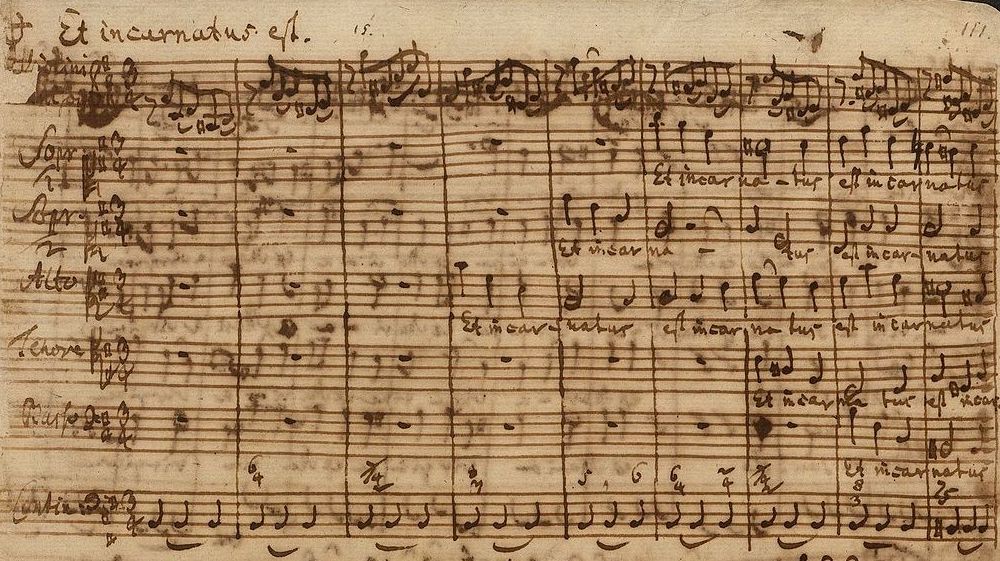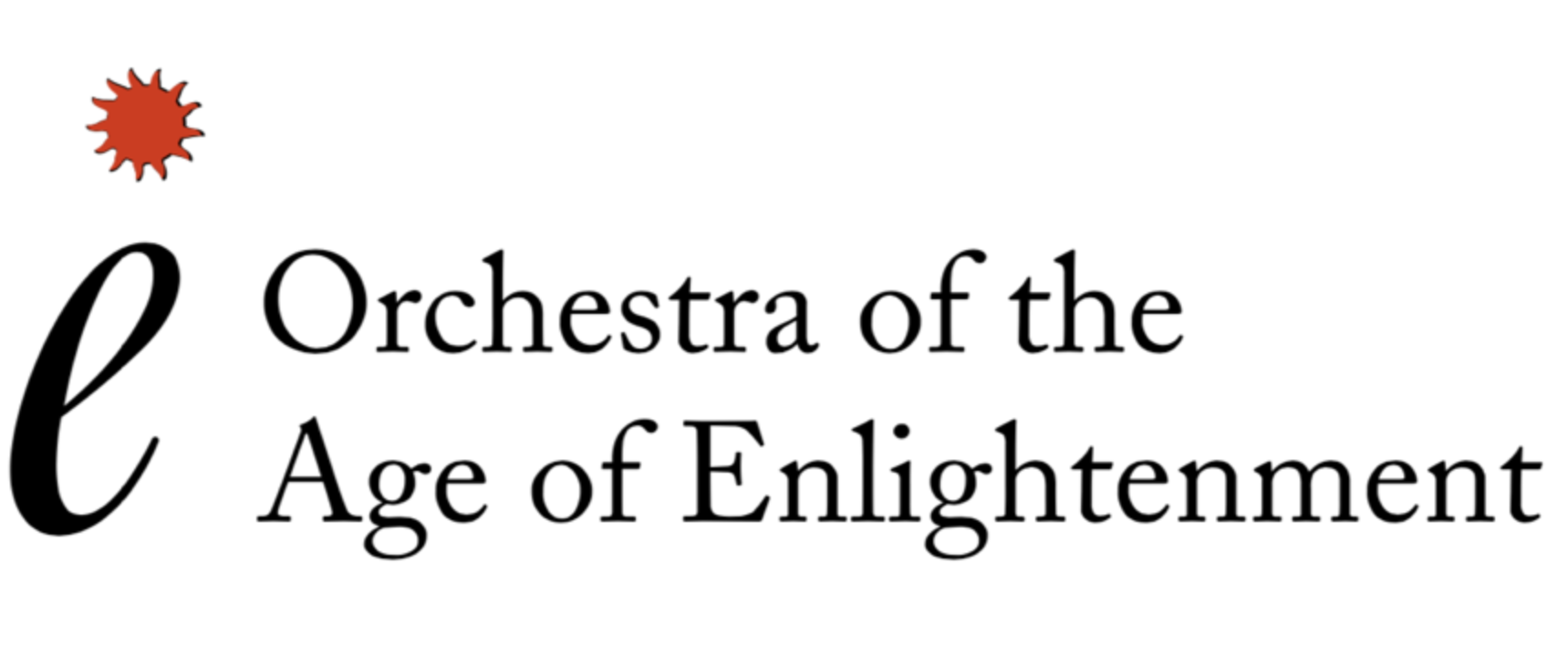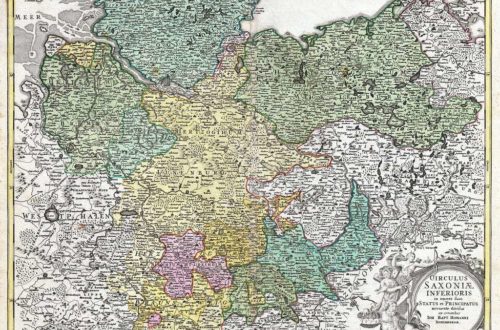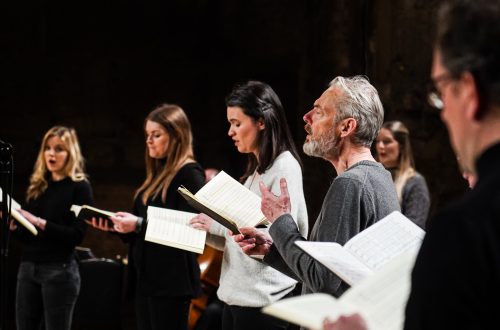Assembling the Mass in B Minor 16 March 2023

The earliest of Bach’s Lutheran masses, the Missa dating from 1733, forms the basis of the Mass in B minor, which includes the more intricate sections of the Catholic liturgy. Following a troubled time in Leipzig, Bach had dedicated the 1733 Missa to Augustus III or Elector Friedrich August II of Saxony – a recent convert to Catholicism – hoping for patronage at the Dresden court. He referred to the Missa as an ‘insignificant example of my musical skill’, but clearly held the music in high esteem: he hung on to the score, sending only the parts to the Elector, and later reworked elements of the Missa’s ‘Gloria’ into his Christmas cantata, Gloria in excelsis Deo, BWV 191. Then, towards the end of the 1740s, Bach returned to the 1733 Missa, augmenting the original with further movements to create the Mass in B minor. This title was never used by Bach, however. Some time after his death it became known as a ‘Missa Catholica’; CPE Bach archived the work as the Great Catholic Mass; and the title of Mass in B minor became established in the 19th Century. The work was almost certainly not performed in its entirety in Bach’s lifetime, and it was first published in 1845.
"Curiously, Bach organised the manuscript of his Mass into four folders; ever-practical, he may have thought it wise to divide this vast work into manageable portions suitable for separate performances."
Curiously, Bach organised the manuscript of his Mass into four folders; ever-practical, he may have thought it wise to divide this vast work into manageable portions suitable for separate performances. Part 1, ‘Missa’, comprises the ‘Kyrie’ and ‘Gloria’; Part 2, ‘Symbolum Nicenum’, contains the ‘Credo’; Part 3, ‘Sanctus’, is devoted to just that movement; and the remaining movements are in a folder called ‘Osanna – Benedictus – Agnus Dei et – Dona nobis pacem’.
The Mass begins with a powerful four-bar declaration, followed by a fugal ‘Kyrie eleison’ scored for five-part chorus, pairs of flutes and oboes d’amore, bassoon and strings. This imposing opening is contrasted with a graceful ‘Christe eleison’ for soprano duet and strings, before we hear the second ‘Kyrie’, again in an intricately layered fugal texture and in keeping with the austere ‘stile antico’ (when Baroque composers emulated the purity of Renaissance music).
The largest section of the work, the ‘Gloria’, is structured symmetrically. It opens with a five-part chorus for which the woodwinds, strings and continuo are joined by trumpets and drums. This concise opening is contrasted with the rich and stately ‘Et in terra pax’, after which comes a soprano aria, ‘Laudamus te’, decorated by an ornate violin line. The ‘Gratias agimus tibi’ is another ‘stile antico’ four-part chorus, the music of which may date back to Bach’s cantata Wir danken dir, Gott, wir danken dir (BWV 29, 1731). The central point of the ‘Gloria’ is occupied by the ‘Domine Deus’, a duet for soprano and tenor, with muted violins and violas and a flute melody interlaced with the vocal lines. For the exquisite ‘Qui tollis peccata mundi’ Bach adapted music from his cantata Schauet doch und sehet, ob irgendein Schmerz sei (BWV 46, 1723). The beautiful aria ‘Qui sedes ad dexteram Patris’ is for mezzo-soprano and oboe d’amore, and a bass solo follows at ‘Quoniam’, with colourful orchestration including independent writing for bassoons and solo horn. This leads seamlessly into the exultant chorus, ‘Cum Sancto Spiritu, in Gloria Dei Patris, Amen’, scored for the same forces as the opening chorus of the ‘Gloria’ in order to unify this section of the Mass.
Two of the choruses in the ‘Credo’ include quotes from Gregorian chant, the first appearing in the tenor line before being developed into a brilliant five-part choral texture. The perky four-part chorus ‘Patrem omnipotentem’ derives from Bach’s cantata Gott, wie dein Name, BWV 171 (1729). It is followed by an intricate duet for soprano and alto (countertenor), ‘Et in unum Dominum’, in which the pair of oboes d’amore add colour, preceding the sombre, long-breathed ‘Et incarnus est’. Another early cantata, Weinen, Klagen, Sorgen, Zagen (BWV 12, 1714), forms the basis of the poignant four-part ‘Crucifixus’, its mournful tone accentuated by the addition of flutes. There may have been a (now lost) instrumental precedent for the heavily instrumental ‘Et resurrexit’, its triumphant five-part chorus reinforced by a powerful ensemble including oboes, flutes, trumpets and drums. The oboe d’amores are again to the fore in the bass aria ‘Et in Spiritum Sanctum’, intertwining with the solo part. The majestic ‘Confiteor’ is a tour de force of ‘stile antico’ writing in five-part counterpoint, in which Bach again quotes plainchant. This section culminates dramatically in the final chorus of the ‘Credo’, ‘Et exspecto resurrectionem mortuorem’, which includes material from Bach’s cantata, Gott, man lobet dich in der Stille, BWV 120, written before 1730.
"...his mind’s extraordinary capacity for seeking out musical pathways that connected past and present, Catholic and Protestant, remained unmatched. "
The music of the ‘Sanctus’ dates back as far as Christmas 1724, and is generously scored for six-part chorus with three trumpets, three oboes, drums, strings and continuo. The ‘Osanna’ includes music from Bach’s cantata Preise dein Glücke (BWV 215, 1734), and is the only section in the whole Mass for which Bach employs a double choir. This passage is articulated twice, sandwiching a lyrical ‘Benedictus’ for solo tenor introduced by an elaborate flute solo (sometimes played on the violin).
The ‘Agnus Dei’ represents one of the pinnacles of the Mass, its haunting alto (countertenor) solo based on an aria from Bach’s Ascension Oratorio, BWV 11 of 1735. The Mass culminates in the joyful four-part ‘Dona nobis pacem’, which echoes music used in the ‘Gratias agimus tibi’ section of the ‘Gloria’ – a repetition that creates a sense of wholeness and resolution at the end of the work. Bach was blind by the time he finished his Mass and his travelling days were behind him, but his mind’s extraordinary capacity for seeking out musical pathways that connected past and present, Catholic and Protestant, remained unmatched.
___
Hear us perform the Mass in B Minor, conducted by Václav Luks, at the Southbank Centre on Sunday 19 March.



